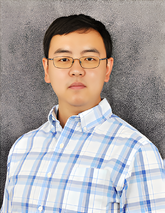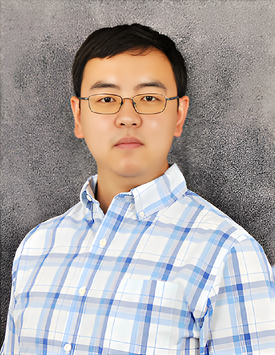Gang Li
Graphical Abstract
“The best way to organize lab jobs is to encourage the students to discuss and coordinate among themselves rather than micromanaging the process… The book currently on my bedside table is How to Talk to Your Cat: Get Inside the Mind of Your Pet by Claire Bessant…”
Find out more about Gang Li in his Introducing… Profile.
 |
Position, location: | Assistant professor, Utah State University, Logan (USA) |
| Homepage: | https://www.li-lab.org/ | |
| ORCID: | orcid.org/0000-0001-6680-961X | |
| Education: | 2010, BS (chemistry) with Prof. Aiwen Lei, Wuhan University (China) 2015, PhD with Prof. Jack R. Norton, Columbia University, New York (USA) 2019, Bristol Myers Squibb postdoctoral fellow with Prof. John T. Groves, Princeton University (USA) |
|
| Research: | Organometallic chemistry, radical chemistry, and catalysis | |
| Hobbies: | Travelling, badminton, and playing with my cats |
Chemistry /science is fun because I can explore my interests at no personal cost.
My favorite example of chemistry/science in everyday life is cooking, where chemical reactions like the Maillard reaction transform simple ingredients into complex flavors that make food both delicious and satisfying.
My first experiment was making phenylzinc reagent for a Negishi reaction from phenyl Grignard reagent, and of course, it failed.
The most rewarding part of my job is seeing my hypotheses validated by carefully designed experiments.
My favorite activity at research conferences is meeting new friends and reconnecting with old friends because it fosters a sense of community that can lead to valuable collaboration and spark new research ideas.
The most important feature of a good collaboration is open communication, where every team member feels comfortable sharing ideas, even when there are disagreements.
I am most proud of my research group when they collaborate effectively to tackle a challenging problem with minimal guidance from me.
The most important thing I have learned from my students is resilience. They consistently approach challenges with patience and are always ready to face the uncertainty inherent in research.
The best way to organize lab jobs is to encourage the students to discuss and coordinate among themselves rather than micromanaging the process.
If I were not a scientist, I would be a chef as cooking is a science in its own right.
I celebrate success by enjoying a nice dinner with my group.
My motto is “Aspire for progress with each passing day.”
My favorite time of day is the evening, when I can reflect on my day, plan for tomorrow, and enjoy the company of my cats.
My favorite way to spend a holiday is travelling with my family, exploring new destinations, and creating lasting memories.
The book currently on my bedside table is How to Talk to Your Cat: Get Inside the Mind of Your Pet by Claire Bessant.
Behind the Science
My group was interested in carbene insertion reactions catalyzed by inexpensive base metal complexes. Inspired by Prof. X. Peter Zhang's work, my first PhD student, Liming Tan, discovered that a simple cobaloxime complex can efficiently catalyze carbene insertion into C≡C bonds, forming cyclopropenes. Surprisingly, when nitrile substrates are used, carbene will insert into C≡N bonds to form oxazoles. The most challenging aspect of our study was uncovering the mechanism of this oxazolation reaction. Our study reveals that the oxazolation reaction proceeds through a direct [3+2] cycloaddition via a metalloradical intermediate instead of the more well-known azirine pathway.
The author presented on this page has published his first article as a submitting corresponding author in Angewandte Chemie:
“Cobaloxime-Based Metalloradical Catalysis: A Versatile Strategy for the Synthesis of Cyclopropenes and Oxazoles”: L. Tan, K. Wu, G. Li, Angew. Chem. Int. Ed. 2025, 64, e202500667.
International edition: DOI: 10.1002/anie.202508663
German edition: DOI: 10.1002/ange.202508663





